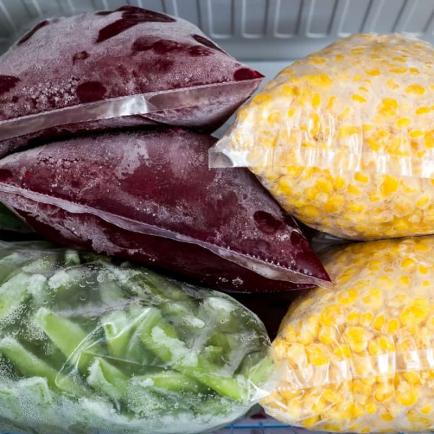
Frozen vegetables are a staple at my house. I love to use them in things like vegetable soup, pot pie and stir fry. But on days when I'm rushing through dinner and realize I forgot to make a vegetable, I have often just skipped them altogether. Why is that, if I have a freezer full of frozen veggies?
Because frozen vegetables can be really gross. Ask any one of your kids and they will probably say the same thing. Kids are stereotypically known to hate vegetables, and if you're anything like me, you'd rather bolster their nutrition than feed into their aversion.
That's why I started a campaign to figure out the secrets to making frozen vegetables yummy while still a fast, healthy addition to any meal. I've made some impressive progress, so I'm here to share it with you.
Be careful how you cook them
Overcooking is the number one killer of frozen vegetable appeal. No one wants to eat mush no matter how you season it or how well it goes with the rest of your meal. When I make frozen vegetables, I avoid boiling them since so many of the nutrients end up in the water, and it's so easy to overcook them. Instead, try steaming them in the microwave or sautéing them on the stove.
I'm too cheap to buy the steamer bags, but using a dish with a loose-fitting lid and a couple of tablespoons of water works great. I also always set the microwave for a little less time than I think the vegetables will take. This way, if they are done sooner than I expect, I haven't already overcooked them.
You can also sauté frozen vegetables. I've found that preheating a splash of oil to a little above medium, then adding the vegetables helps them keep their texture. If you add the vegetables to a cold pan and then heat it up, it slowly thaws them before they start cooking. That's just asking for gross vegetables.
I also avoid mixed vegetables, since I find the different sizes and density of the vegetable chunks mean that they will cook at different rates. If my end goal is a mix of vegetables, such as a stir fry, I just add the vegetables one at a time, starting with the one that will take the longest to cook. Broccoli stems, for instance, take much longer to cook than other types of vegetables.
Season them. Always
I almost always start with a baseline seasoning of salt, pepper, and a smidgen of butter or olive oil. Beyond that, consider the flavor of your vegetable and the rest of your meal. Peas with coriander are a surprising, sweet sort of vegetable dish that has been a big hit at my house, especially with Asian dishes.
It's also important to think about the tastes of the people for whom you are cooking. I enjoy green beans tossed in Italian dressing, for example, but since my husband isn't a big fan of vinegar, we don't do this often. If you have kiddos who struggle to eat their vegetables, a little cheese on broccoli or cauliflower can go a long way. For more sophisticated palates, consider a more complex combination like spicy, sweet, sour. Speaking of sour, lemon juice and garlic complement many vegetables beautifully. I find the salt, pepper, and butter especially important with that seasoning choice.
We all know that frozen vegetables are quick and easy. But did you know they can be yummy, too? With these tips, you'll be able to both cook and season them to perfection, contributing to your family's nutrition without contributing to your stress. Take that, weekday meals! Vegetables are making a comeback.

